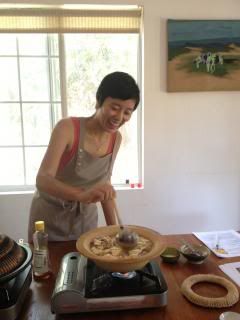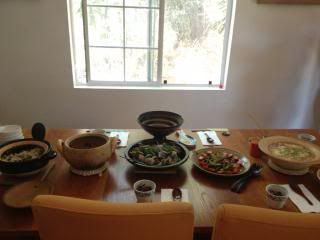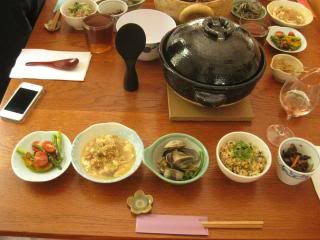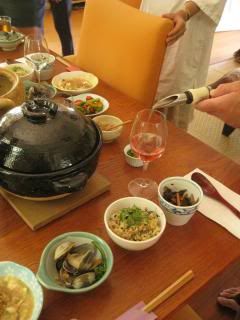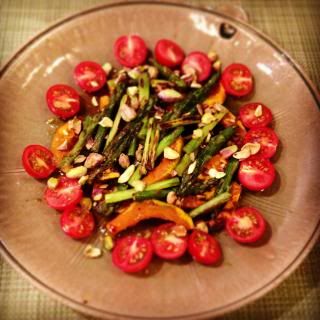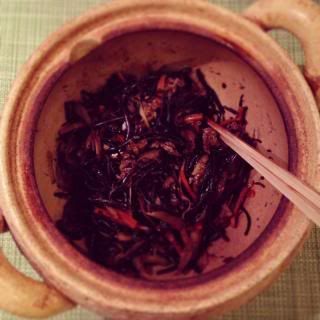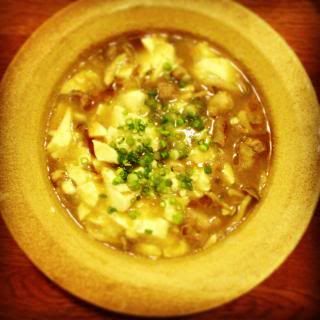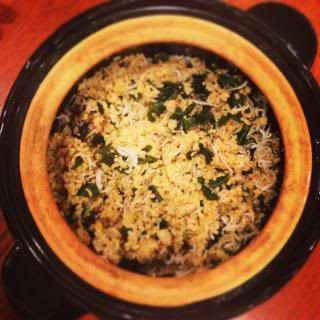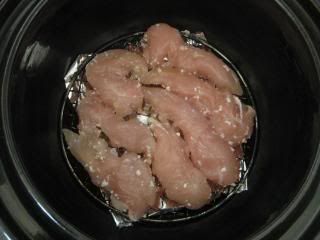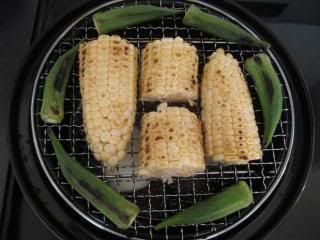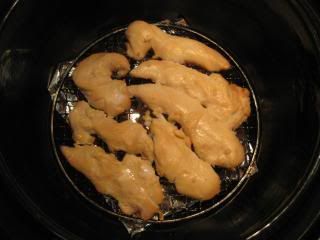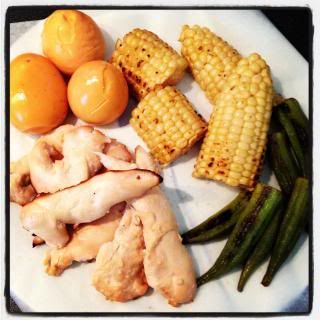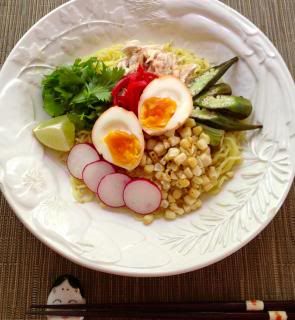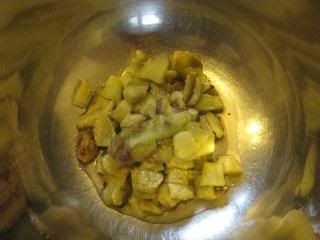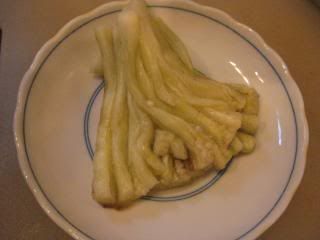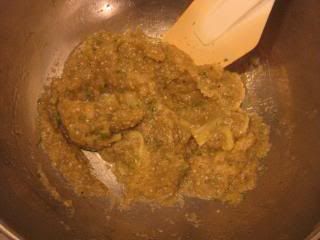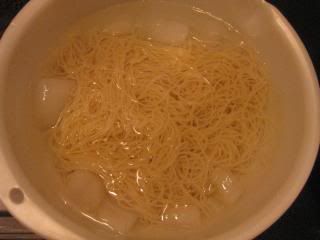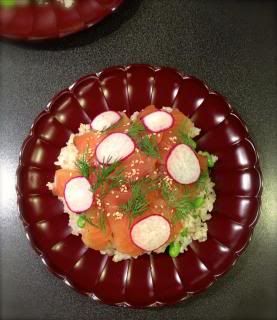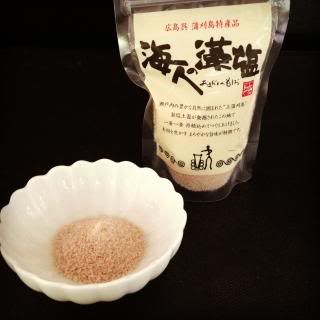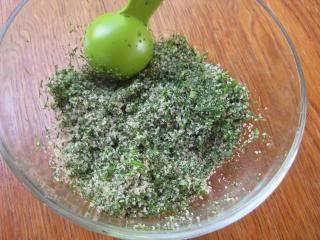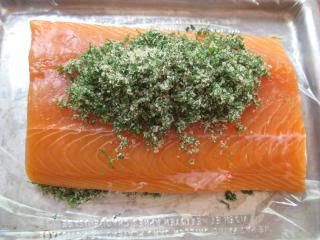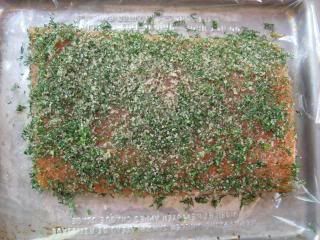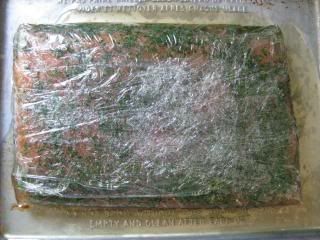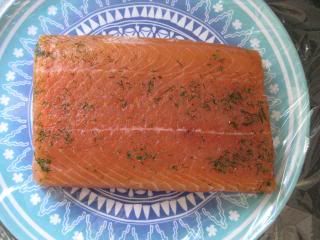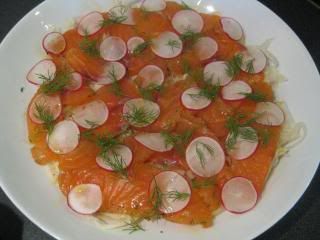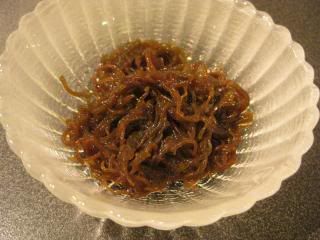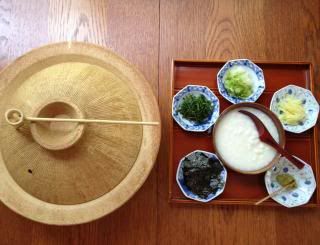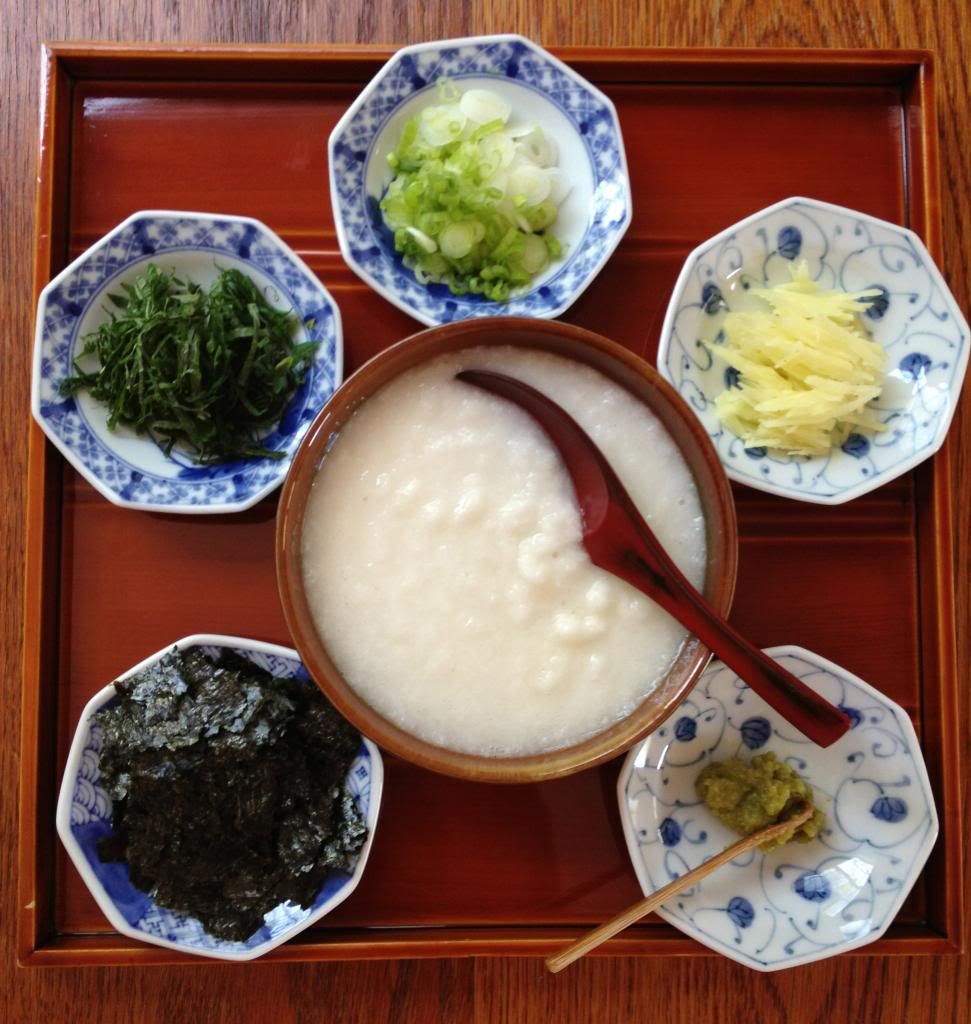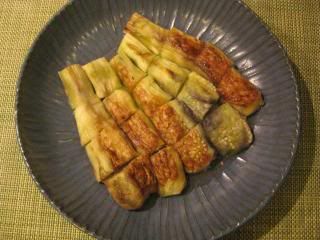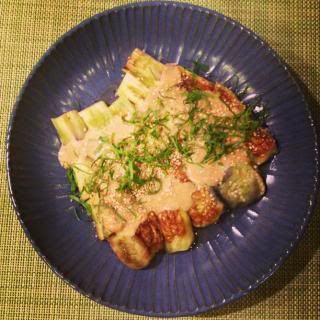 |
| Marinated Heirloom Tomatoes in "Awase-zu" Dressing |
Back in my last trip to Kyoto,
I visited Murayama Zosu, who makes famous
"Chidori-su" brand vinegar and is one of the oldest and most traditional rice vinegar makers in Japan. During the visit, Murayama-san, the owner of the company kindly gave gifts of their products to my friend and I. One of them was Chidori-su brand's "Awase-zu", which is their rice vinegar, seasoned with mirin, sugar, salt, soy sauce, and yuzu juice.
Their "Awase-zu" was so round, delicate, and tasty. I used it for so many different dishes and used up so quickly. I really wanted to make a similar "Awase-zu" myself, but the only clues were the ingredients list in the back label of the bottle and my memory of the aroma.
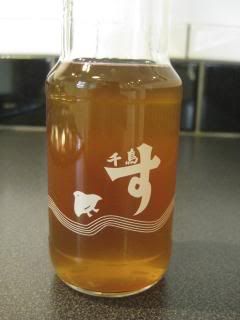
After a few test kitchen experiments, I could make my version of "Awase-zu", which has the closest aroma and flavor to their "Awase-zu"! I was so happy. So, I put mine in the original Chidori-su's "Awase-zu" bottle.
For the best result, I highly recommend you find premium Kyoto brand vinegar, which is brewed to best result with very natural and mild flavors. But, I know it's not easy to find such vinegars in the US, so you could also make it with other Japanese brands' rice vinegar with milder acidity level (about 4.2%).
Here's my "Awase-zu" recipe.
Kyoto-style all purpose "Awase-zu"
Ingredients: (for approx. 1.5 cups or 300 ml)
1 cup (240 ml) rice vinegar (4.2% or 4.3% acidity level)
2 tablespoons raw brown sugar
2 tablespoons mirin
2 teaspoons salt
2 teaspoons light color soy sauce ("usukuchi shoyu")
4 teaspoons yuzu juice
Procedure:
- In a sauce pan, combine all the ingredients except for the yuzu juice. Set over medium heat. Stir to dissolve the sugar and salt.
- As soon as it starts boiling, turn off the heat. Add the yuzu juice and let it cool it down.
*This "Awase-zu" can keep at a cool storage for a while (I don't know exactly how long, because I use it up quite fast and make a new batch every so often.)
You can simply drizzle this "Awase-zu" over grilled fish, seaweed salad, etc. Or, mix with olive oil with some salt and pepper and make Japanese-style vinaigrette.
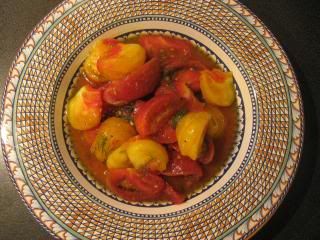
Here's one of my regular dishes made with "Awase-zu" this summer. I got an inspiration to make this when I visited accessory designer, Chan Luu's beautiful home for breakfast. Chan is a wonderful cook and she made marinated heirloom tomatoes with white balsamic vinegar and olive oil.
Japanese-flavored Marinated Herloom Tomatos
Ingredients:
2 pounds (900 g) heirloom tomatoes
(marinade)
1 tablespoon "Awase-zu"
1 tablespoon lemon juice
1/2 teaspoon raw brown sugar
1/4 teaspoon vegetable powder (optional)
2 tablespoons olive oil
salt and pepper to taste
some dill
Procedure:
- Blanch the tomatoes in simmering water for 10 seconds. Shock them in ice water and peel the skin.
- Cut the tomatoes into wedges. Put them in a strainer and let them drain excess liquid for 15-30 minutes.
- Meanwhile, whisk together the ingredients for the marinade. Set aside.
- In a bowl, combine the tomato wedges and the marinade. Add some dill leaves and gently mix them together with a large spoon.
- Cover and refrigerate for a couple of hours. Meanwhile, stir a couple of times for even marinade.
This dish is like a eating gazpacho. It's so tasty and you want to drink up all the juice to finish the dish.

